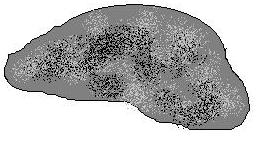
|
|
|
|
|
|||
Geology
Basic Island Info
San Cristobal (Chatham Island)
600 mi. west of Ecuador
named for William Pitt, Earl of Chatham.
Area of 195 sq.mi.
Regular supply of freshwater from rainwater in broken craters.
Where Charles Darwin complied data in1835 for Origin of Species.
expots: sugar, coffee, cassava, cattle, fish, lime.
pop (1981) 2,781
Santa Cruz (Chaves, Indefatigable Island)
600 mi. west of Ecuador
Circular shape
389 sq.mi.
Central volcanoe rises 2300 ft.
has harbor.
substinence farming, fruit and sugarcane, cattle.
pop (1982) 2404
Holds Charles Darwin Resaeach Station.
Surrounded by Galapagos Marine Resource Reserve.
Baltra (South Seymour Island)
600 mi. west of Ecuador
8 sq.mi.
Formally adjunct to Santa Cruz, due to volcanic and fault activity, now seperated.
U.S. airbase is defunct. now ecuadorian military base, but also major airport.
Major entryway to Galapagos.
Isabela
600 mi. west of Ecuador
2,249 sq.mi. (2/3 of total land mass of galapagos)
crosses equator.
2 active volcanoe craters (out of 5)
mt. Azul
covered with forests.
comorants and penguins
people live on southern coast.
potatoes, cattle, wild hogs, reptile hides, fish.
pop (1981) 616
notes(perhaps we should save this island and move people off of it, to one of the smaller ones.)
Academy Bay
600 mi. west of Ecuador
site of Charles Darwin Research Station
visisor pop. (1974) 4037; (1990) 9785; (1998) 15450
INFO ON VOLCANOES
volcanoes are shield volcanoes, due to faultlines betweenearth tectonic plates, specifically the Nazca and the South American Plate.
magma is of basaltic lava origin.
islands also made of volcanic plateaus. basalt lava erupts from fissures.
due to movement of nazca plate. hot spot moves.
submerged islands (due to erosion) discovered between san cristobal and mainland.
"lava tubes" are created when the top layer of a molten lava flow hardens and the undersection flows out, leaving a hollow chamber
when a sinkhole occurs in a portion of the lava tube, enormous lava caves and pit craters are formed.
two types of lava flow: pahoehoe and aa (both of Hawaiian origin).
pahoehoe tends to be smooth, but twisted. this is occurs because during the flow, the top hardens slightly, but the bottom remains a liquid, continuing to flow , dragging the top along a little, making it wrinkle slightly
aa tends to be sharper and rigid.again the top of the flow will harden and on the ends it will fall off of the sides, so the flow overruns it.
of the two, the aa tends to be quicker moving down the slopes, also the galapagos tends to have more aa flows
|
|